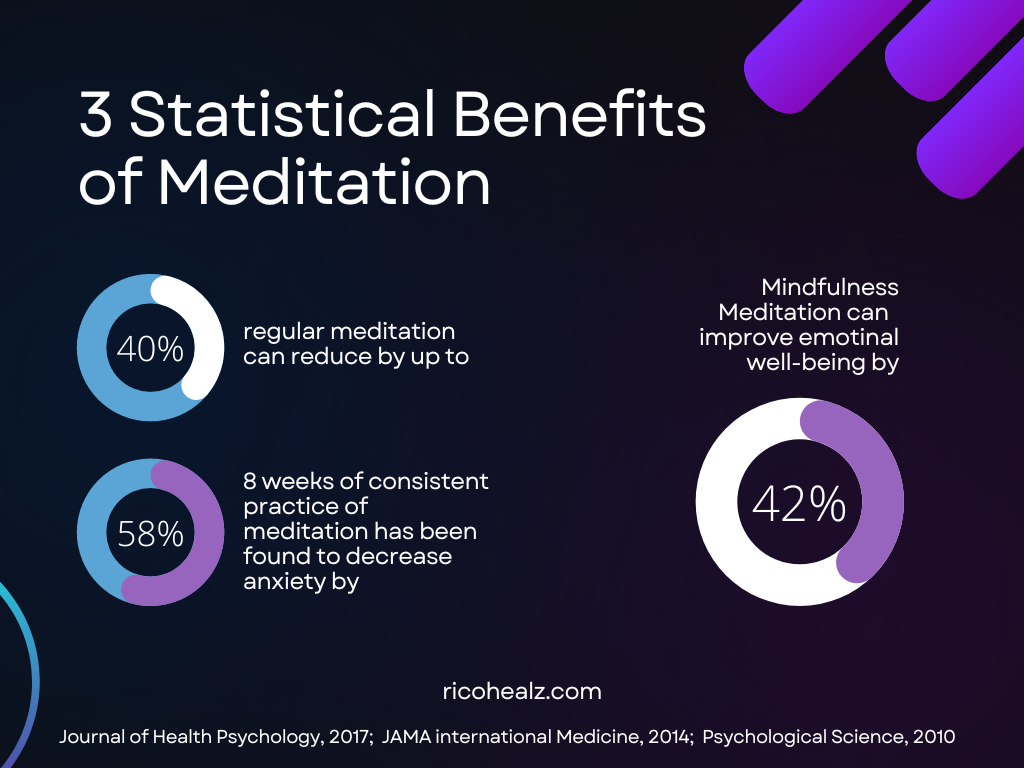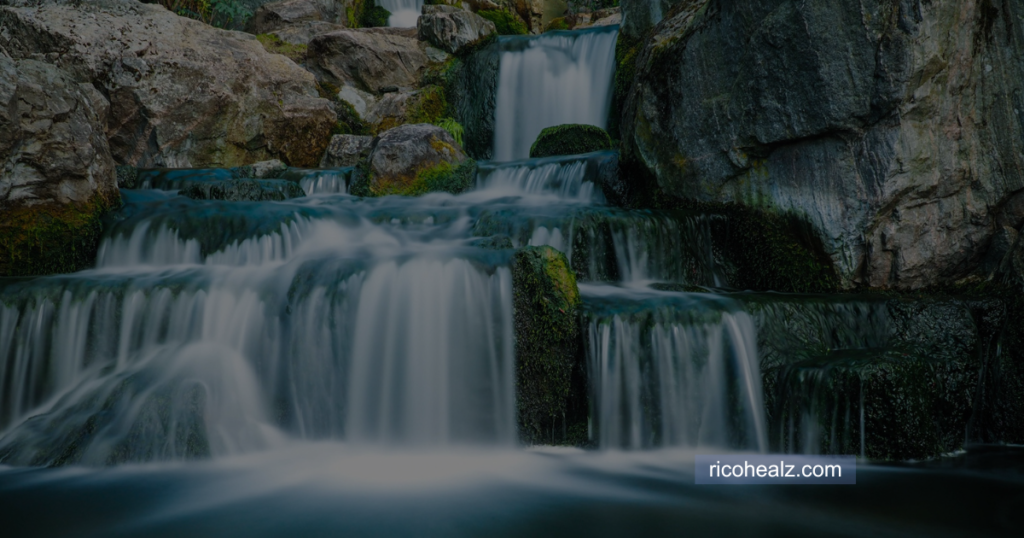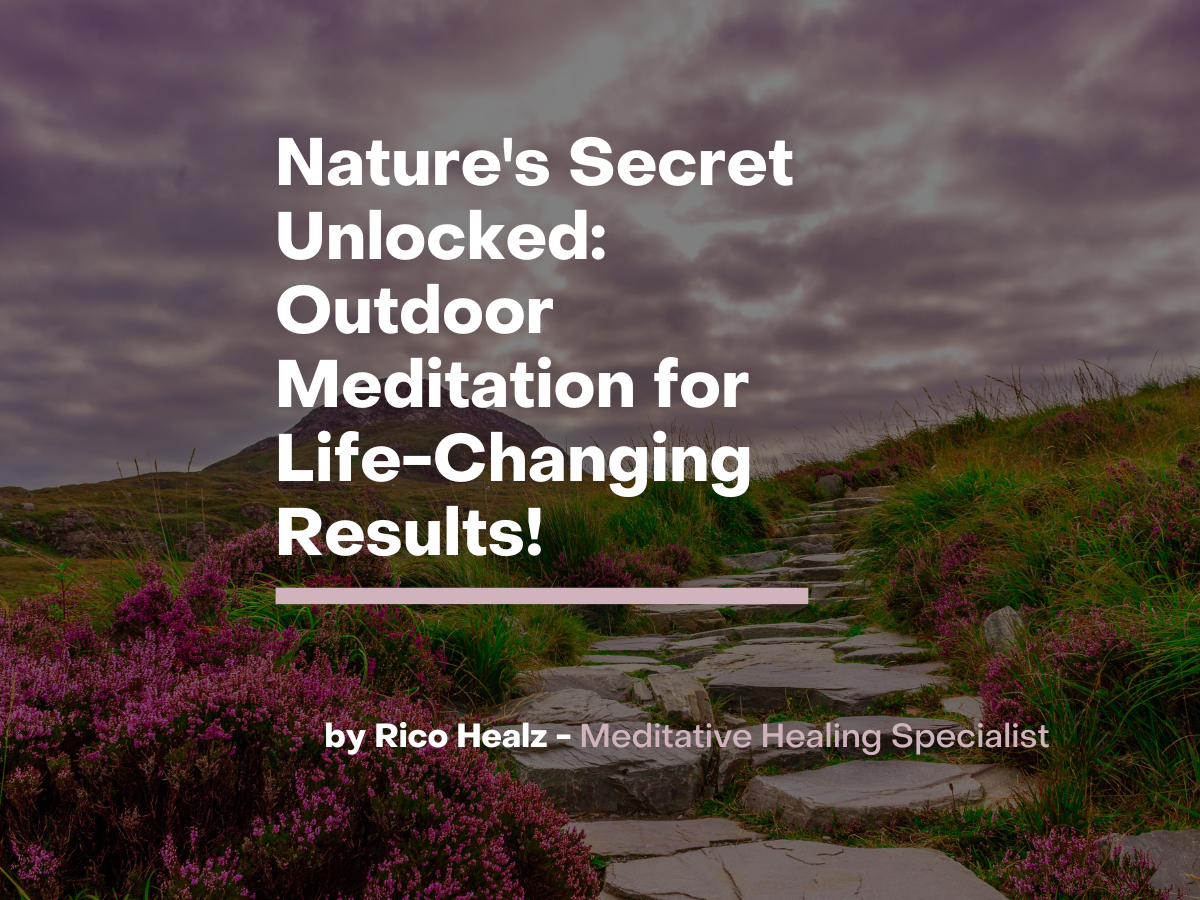Unlock Nature’s Secret: Outdoor Meditation For Life-Changing Results!
Introduction
IIs it true? Is nature’s secret outdoor meditation? In today’s fast-paced, technology-driven world, it’s easy to lose touch with the natural environment and become disconnected from the healing powers of nature. The constant demands of work, family, and social commitments often lead to increased stress levels and a general sense of unease. However, research has shown that connecting with nature has numerous positive effects on our overall well-being, from reducing stress to boosting mental clarity. Similarly, the practice of meditation has long been recognized for its potential to foster emotional healing, mental resilience, and a sense of inner peace.
By combining outdoor activities with meditative healing practices, we can create a powerful synergy that maximizes the benefits of both physical exercise and mindfulness. In this blog post, we will explore the science behind the connection between nature and meditation, discuss various outdoor activities that promote meditative healing, offer tips for incorporating mindfulness into your favorite outdoor pursuits, and guide you in creating a personalized practice that harnesses the healing power of nature.

The Science Behind Nature and Meditation
The psychological effects of being in nature
Stress reduction
Numerous studies have demonstrated the positive impact of spending time in nature on stress reduction. In one study, participants who took a 20-minute walk in a natural setting experienced a significant decrease in cortisol levels, a hormone associated with stress, compared to those who walked in urban environments. Another study showed that spending just 120 minutes a week in nature resulted in improved mental well-being and lower stress levels.
Improved mental clarity and focus
Nature has also been shown to boost cognitive functioning and concentration. In a study conducted by the University of Utah and the University of Kansas, participants who spent four days in nature without any electronic devices experienced a 50% improvement in their creative problem-solving abilities. Additionally, a review of multiple studies revealed that exposure to natural environments can enhance attention and cognitive functioning.
The physiological benefits of meditation
Reduced blood pressure and heart rate
Meditation has been linked to various health benefits, including lower blood pressure and heart rate. A meta-analysis of 47 clinical trials found that practicing meditation led to significant reductions in blood pressure, potentially reducing the risk of heart disease and stroke. Another study showed that participants who practiced meditation regularly experienced a decrease in heart rate and improvements in heart rate variability.
Enhanced immune system
Meditation can also boost the immune system, helping to protect the body from illness. A study published in Psychosomatic Medicine found that participants who underwent an 8-week meditation program showed increased activity in areas of the brain responsible for regulating the immune system, as well as an increase in antibodies.
The power of combining nature and meditation
Synergistic effects on mental and physical health
Combining the benefits of nature and meditation can create a potent synergy that amplifies the positive effects of both practices. A study conducted on participants engaging in a mindfulness-based stress reduction program in a natural setting found that they experienced significant improvements in stress levels, mental well-being, and feelings of connection to nature.
Increased overall well-being
By integrating outdoor activities with meditative practices, individuals can experience enhanced mental clarity, stress reduction, and improved physical health. This powerful combination can contribute to a greater sense of overall well-being, personal fulfillment, and a deeper connection to the natural world.

Outdoor Activities for Meditative Healing
Walking meditation
How to practice walking meditation
- Find a quiet, natural setting with a flat surface.
- Walk at a slow, steady pace while focusing on the sensation of your feet touching the ground.
- Coordinate your breath with your steps, inhaling and exhaling in rhythm with each step.
- Gently bring your attention back to your breath and footsteps when your mind wanders.
Benefits of walking meditation in nature
- Walking meditation has been shown to reduce anxiety and increase well-being.
- A study found that combining walking meditation with nature significantly enhanced the psychological benefits compared to walking meditation in an indoor setting.
- Walking in nature can boost mood and self-esteem, further enhancing the positive effects of walking meditation.
Yoga in nature
Adapting yoga practice for the outdoors
- Choose a flat, comfortable surface for your yoga mat.
- Wear clothing that allows for easy movement and is appropriate for the weather conditions.
- Be mindful of any uneven terrain or natural obstacles while practicing.
- Consider using a guided audio practice or a yoga app for instruction.
The advantages of practicing yoga outside
- Practicing yoga outdoors has been shown to reduce stress and increase feelings of well-being.
- Exposure to natural light can improve sleep quality and overall mood.
- The fresh air and natural surroundings can enhance the sensory experience and deepen your connection to your practice.
Forest bathing (Shinrin-yoku)
The Japanese practice of connecting with nature
- Shinrin-yoku, or “forest bathing,” involves immersing oneself in a forest environment, taking in the atmosphere through all the senses
- The practice encourages mindful observation and connection to nature
Benefits and how to incorporate it into your routine
- Forest bathing has been linked to lower stress levels, reduced blood pressure, and improved immune function.
- To practice forest bathing, find a quiet, wooded area and spend time mindfully walking, observing, and breathing in the natural environment.
- Incorporate forest bathing into your routine by setting aside time for regular visits to natural settings.
Gardening as meditation
The therapeutic aspects of gardening
- Gardening can be a meditative activity that promotes relaxation and a sense of accomplishment.
- The act of tending to plants and nurturing growth can foster feelings of connection. As well as the responsibility to the natural world.
Mindful gardening techniques for relaxation and stress relief
- Focus on the sensations of touch, smell, and sight as you work in the garden.
- Use gardening tasks, such as planting, weeding, or watering. Use these opportunities to practice mindfulness and cultivate a sense of presence.
A study found that gardening can significantly decrease cortisol levels. Indicating reduced stress and increased relaxation.
Mindfulness and Outdoor Activities
Incorporating mindfulness into outdoor pursuits can significantly enhance the benefits of engaging in these activities. For example, practicing mindfulness while hiking can lead to increased feelings of connectedness to nature and reduced negative emotions, as demonstrated in a study. Similarly, incorporating mindfulness into cycling can reduce stress and enhance the enjoyment of the activity.
Engaging in mindful outdoor activities can lead to a deeper connection with and appreciation for the natural environment. By paying attention to the present moment, you can fully experience the beauty and wonder of nature, which can lead to an increased sense of well-being. Moreover, combining mindfulness with outdoor activities has been shown to reduce stress and improve mental health. A study found that participants who engaged in mindful outdoor activities experienced significant reductions in symptoms of depression and anxiety compared to those who participated in the same activities without mindfulness practice.
To incorporate mindfulness into your outdoor activities, begin by focusing on the sensations of your body as you move, such as the rhythm of your breath and the feeling of your feet hitting the ground. Pay attention to the sights, sounds, and smells of your surroundings, immersing yourself in the natural environment. This practice of mindfulness can promote relaxation, improve mood, and foster a sense of inner peace.

Creating a Personalized Nature and Meditation Practice
Assessing personal preferences and abilities
To create an effective nature and meditation practice, it is essential to consider your individual preferences and abilities. Research has shown that a personalized approach to mindfulness and outdoor activities can lead to greater adherence and enhanced benefits. Reflect on the outdoor activities and meditative practices that resonate with you, and consider your physical abilities, available time, and proximity to natural settings when choosing activities. Recognize that your practice may evolve over time as your needs and preferences change.
Choosing the right outdoor setting for your practice
The choice of the environment plays a crucial role in the success of your nature and meditation practice. Select natural environments that promote relaxation and a sense of connection, such as parks, forests, or gardens. A study found that spending time in green spaces can reduce stress levels and improve mental well-being. Consider accessibility and safety when selecting a location for your practice, and be open to exploring new settings to diversify and enrich your experience.
Setting goals and intentions for your practice
Establishing clear goals for your nature and meditation practice can increase motivation and enhance the overall effectiveness of the activities. A study found that individuals with specific intentions for their nature-based mindfulness practices experienced greater improvements in well-being compared to those with no clear goals. Set realistic expectations and commit to a consistent practice schedule to maximize the benefits of your practice. Approach your practice with an open mind and a willingness to explore new experiences, allowing yourself to grow and adapt over time.
Tracking progress and celebrating achievements
Monitor your progress
Keep a journal or use a tracking app to record your experiences, thoughts, and feelings during your nature and meditation practice. This can help you identify patterns, areas of improvement, and personal growth over time. Regularly reflecting on your progress can provide motivation and a sense of accomplishment, further enhancing your commitment to your practice.
Celebrate your achievements
Acknowledging and celebrating your achievements, no matter how small, can boost self-esteem and reinforce your dedication to your practice. Share your successes with friends and family or participate in online communities where you can connect with like-minded individuals. These connections can provide support, encouragement, and inspiration as you continue on your journey towards improved well-being and a deeper connection with nature.
Adapting your practice to fit your lifestyle
Make it a priority
Incorporate your nature and meditation practice into your daily routine, ensuring that it remains a priority in your life. Research has shown that individuals who consistently engage in mindfulness and outdoor activities experience greater long-term benefits in terms of mental and physical health.
Be flexible and adaptable
Life circumstances can change, and it’s essential to adapt your practice to fit your evolving needs and preferences. Be open to exploring new activities or adjusting the frequency and duration of your practice as necessary. Maintaining flexibility and adaptability in your practice can help ensure its sustainability and long-term success.
By following these guidelines and personalizing your nature and meditation practice, you can harness the healing power of nature, enhance your mental and physical well-being, and cultivate a deeper connection with the natural world.
Exploring new activities and expanding your practice
Stay curious and open-minded
As you become more experienced and comfortable with your nature and meditation practice, you may wish to explore new activities and techniques to further enhance your well-being. Stay curious and open-minded, embracing opportunities to learn and grow within your practice.
Attend workshops, classes, or retreats
Consider attending workshops, classes, or retreats focused on outdoor meditation and mindfulness activities to expand your knowledge and deepen your practice. Engaging with experts and fellow practitioners can provide fresh perspectives, insights, and inspiration.
Consider group activities and social connections
Incorporating group activities and social connections into your practice can enhance the experience and provide additional motivation. Join local clubs, meetups, or online communities focused on nature-based mindfulness activities. Connecting with like-minded individuals can offer support, encouragement, and camaraderie, further enriching your practice.
Embracing the lifelong journey of nature and meditation practice
Acknowledge the ongoing process
Recognize that your nature and meditation practice is a lifelong journey of self-discovery, growth, and connection with the natural world. Embrace the ongoing process, acknowledging that there will be challenges, triumphs, and learning experiences along the way.
Cultivate gratitude and appreciation
As you progress in your practice, cultivate gratitude and appreciation for the healing power of nature and the positive impact it has on your well-being. This mindset can help you stay grounded, focused, and committed to your practice, ensuring long-term success and personal growth.
By continually exploring, adapting, and expanding your nature and meditation practice, you can nurture a more profound connection with the natural world and experience its transformative healing power on your mind, body, and spirit.

Conclusion
Combining outdoor activities with meditative healing practices can provide a powerful pathway to improved mental, emotional, and physical well-being. Embracing the healing power of nature and incorporating mindfulness into your outdoor pursuits. You can experience a deeper connection with the natural world. Also, reap the numerous benefits that come from engaging in these activities. Creating a personalized practice, setting clear goals, and remaining open to exploration and growth are essential components of a successful and sustainable nature and meditation journey. As you embark on this transformative path, remember to stay curious, adaptable, and grateful for the profound impact nature can have on your overall well-being.


Obrigado pelo artigo auspicioso Na verdade, foi uma conta de diversão, parece avançado para mais agradável de sua parte. A propósito, como poderíamos nos comunicar
I do trust all the ideas youve presented in your post They are really convincing and will definitely work Nonetheless the posts are too short for newbies May just you please lengthen them a bit from next time Thank you for the post
Só quero dizer que seu artigo é incrível A clareza em sua postagem é ótima e posso presumir que você é um especialista neste assunto Bem, com sua permissão, deixe-me pegar seu feed para me manter atualizado com as próximas postagens. Um milhão de agradecimentos e continue o trabalho gratificante
Thanks I have recently been looking for info about this subject for a while and yours is the greatest I have discovered so far However what in regards to the bottom line Are you certain in regards to the supply
Eu nem sei como vim parar aqui, mas achei esse post ótimo, não sei quem você é, mas com certeza você está indo para um blogueiro famoso, se ainda não estiver.
I am not sure where youre getting your info but good topic I needs to spend some time learning much more or understanding more Thanks for magnificent info I was looking for this information for my mission
Wow amazing blog layout How long have you been blogging for you made blogging look easy The overall look of your web site is magnificent as well as the content
I was recommended this website by my cousin I am not sure whether this post is written by him as nobody else know such detailed about my trouble You are amazing Thanks
I loved even more than you will get done right here. The picture is nice, and your writing is stylish, but you seem to be rushing through it, and I think you should give it again soon. I’ll probably do that again and again if you protect this hike.